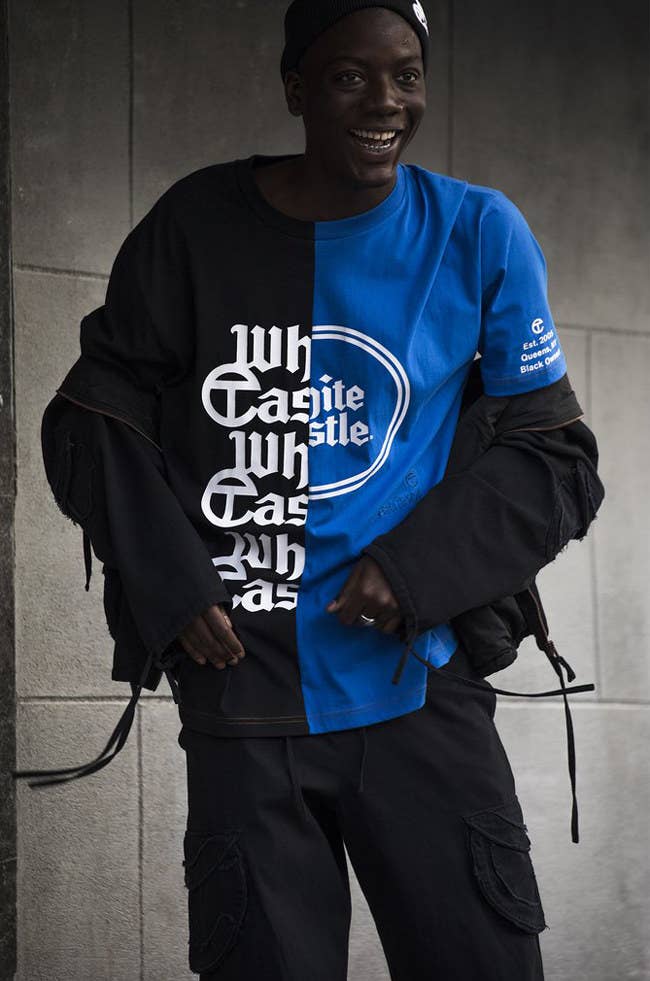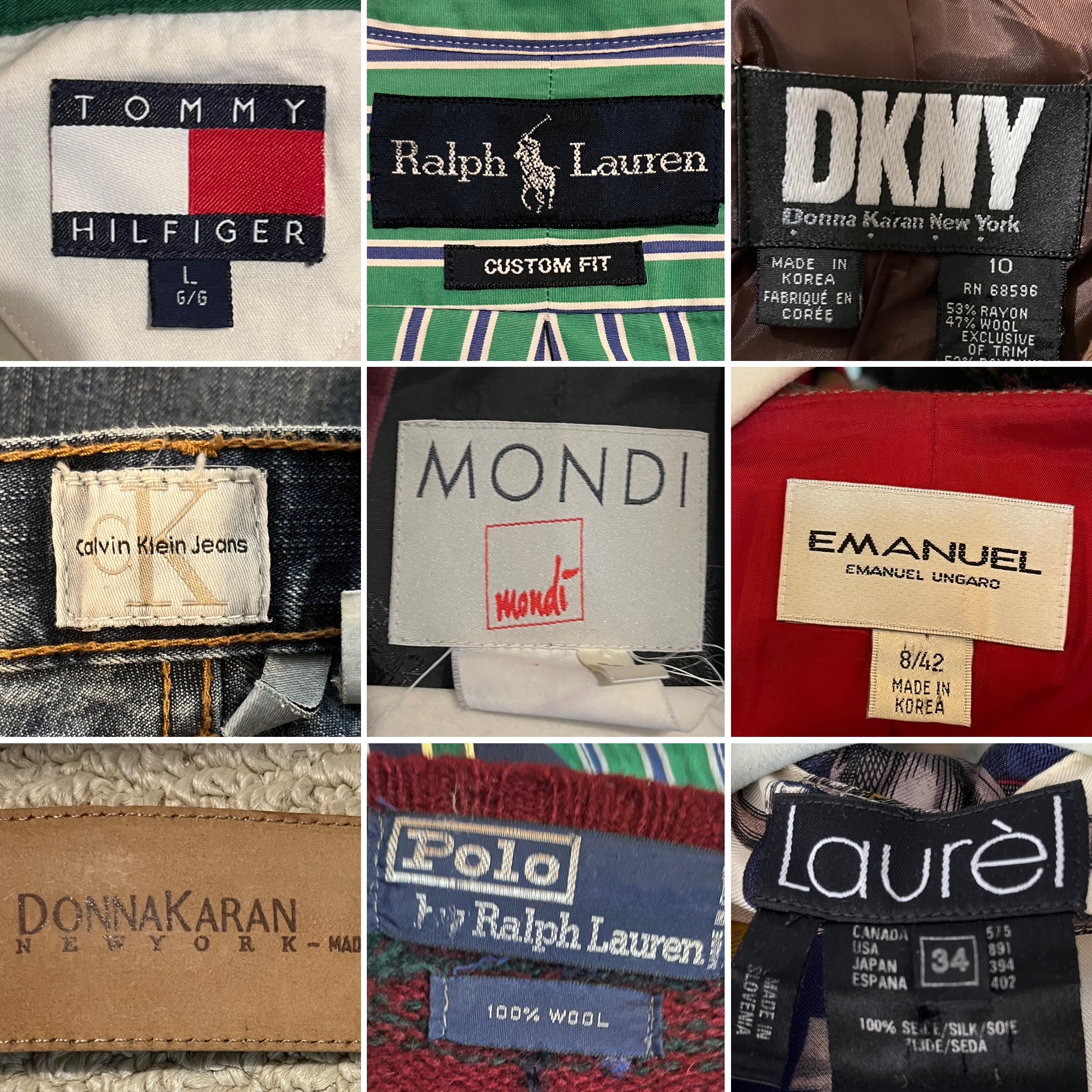How Fabric Weight Impacts Comfort in Branded Clothing
How Fabric Weight Impacts Comfort in Branded Clothing
Blog Article
The Significance of Lasting Apparel: Just How It Impacts the Setting and Your Wardrobe
Lasting clothing is increasingly identified for its important role in lessening the ecological effect of the quick apparel industry. By concentrating on green materials and ethical production methods, it addresses pushing environmental worries. This change not just profits the planet yet likewise affects customer selections, resulting in a more thoughtful approach to wardrobe administration. Recognizing these characteristics elevates crucial concerns about fashion's future and personal duty fit it.
The Environmental Impact of Quick Fashion

Benefits of Lasting Materials
Sustainable products supply substantial benefits, especially via eco-friendly fabric choices that reduce environmental injury. These materials likewise show resilience and long life, minimizing the requirement for constant replacements. Because of this, they add to a much more lasting fashion business and advertise responsible customer habits.
Eco-Friendly Fabric Selections
While the fashion business has actually long been related to fast fads and ecological damage, the surge of environmentally friendly textile options offers a transformative possibility. Sustainable materials such as natural cotton, hemp, and Tencel have gained popularity as a result of their lower ecological impact. These textiles are often generated without dangerous chemicals and require much less water, reducing their carbon impact - Branded Clothing. Additionally, numerous eco-friendly materials are biodegradable, contributing to a round economic situation by lessening waste. Choosing lasting products not just supports environmentally liable techniques however also advertises much healthier communities. As consumers come to be a lot more familiar with their purchasing power, the need for environmentally friendly fabrics urges brands to innovate and embrace even more lasting manufacturing approaches, eventually profiting the planet and future generations
Durability and Durability Advantages
Lots of customers are significantly recognizing the resilience and durability benefits of lasting products in their clothes choices. Unlike conventional textiles, lasting products such as organic cotton, hemp, and recycled polyester are crafted to hold up against damage, causing garments that last much longer. This minimized frequency of replacement not just saves customers cash with time however additionally lessens waste created by fast style. On top of that, lasting clothing often uses environmentally friendly manufacturing methods that improve textile toughness, adding to a decrease in the overall carbon impact. By investing in resilient clothing, customers can grow a more sustainable wardrobe while enjoying top notch pieces that preserve their visual and functionality over time. Consequently, longevity and durability stand as vital benefits of picking lasting products.
Reducing Waste With Sustainable Practices
Decreasing waste in the apparel industry can be accomplished with ingenious methods such as upcycling and repurposing products. Furthermore, adopting minimalist wardrobe techniques urges customers to focus on top quality over quantity, ultimately lowering garments consumption. With each other, these strategies contribute significantly to a more sustainable clothes design.
Upcycling and Repurposing Materials
Upcycling and repurposing products have become ingenious techniques in the fashion business, changing discarded fabrics into valuable brand-new items. This technique not only reduces waste however also urges imagination and uniqueness in apparel style. By taking old garments and products, developers can develop distinct pieces that show personal style while decreasing the need for brand-new sources. Additionally, upcycling often needs less power and water contrasted to conventional manufacturing procedures, considerably lowering the ecological footprint of style. As consumers come to be much more familiar with sustainability, the popularity of upcycled clothes continues to increase, promoting a circular reference economic climate. Inevitably, these methods add to a more lasting future, where style focuses on ecological health over fast manufacturing and intake.

Minimal Closet Approaches
As individuals progressively seek to minimize their ecological influence, adopting minimal closet techniques has gained traction as an efficient method to lasting fashion. These approaches highlight top quality over amount, motivating consumers to curate a smaller sized collection of flexible, long lasting clothing. By concentrating on ageless items that can be combined and matched, individuals can reduce the regularity of acquisitions and eventually lower waste.Additionally, minimalism promotes mindful usage, advising shoppers to assess the ecological and moral effects of their options. This technique not only cultivates a much more lasting way of living yet likewise simplifies everyday decision-making relating to clothing. As individuals embrace minimalist principles, they add to a fashion society that values sustainability and liable consumerism, ultimately causing a much more eco-conscious society.
The Function of Honest Labor in Sustainable Style
While many consumers are significantly knowledgeable about the ecological effects of their apparel selections, the relevance of ethical labor techniques in lasting style can not be ignored. Moral labor includes fair wages, safe working conditions, and regard for employees' civil liberties, developing the backbone of liable fashion production. Brands that focus on ethical labor not only uplift areas however also established a standard for responsibility in the industry.Moreover, the combination of honest techniques fosters openness, enabling consumers to make informed selections regarding their purchases. This practice contrasts sharply with fast style's unscrupulous labor designs, which typically prioritize profit over people. By supporting business dedicated to ethical labor, customers contribute to a system that values human self-respect together with ecological sustainability. Honest labor is not simply an add-on; it is essential to the broader goal of lasting style, ensuring that the quest for eco-friendliness does not come at the cost of human rights.
The Impact of Lasting Clothes on Carbon Emissions
Sustainable clothing has the possible to substantially decrease carbon discharges associated with the garment industry. Conventional garment production contributes notably to greenhouse gas discharges, primarily as a result of energy-intensive manufacturing procedures and making use of non-renewable resources. On the other hand, lasting fashion focuses on environment-friendly products, such as organic cotton or recycled fibers, which commonly call for much less power to produce.Moreover, lasting brand names often tend to adopt a lot more reliable manufacturing practices, minimizing waste and decreasing total discharges. By focusing on toughness and classic style, lasting clothes encourages consumers to get less frequently, additional decreasing the carbon impact related to overconsumption.Additionally, many lasting brand names are devoted to transparency in their supply chains, enabling customers to make informed options that align with their worths. Inevitably, changing in the direction of lasting apparel can lead to a considerable decrease in carbon exhausts, adding to a much healthier world and an extra lasting future for the fashion business.
Sustaining Neighborhood Economic Climates With Sustainable Options
The shift toward sustainable apparel not just addresses ecological issues but also significantly benefits neighborhood economic climates. By choosing sustainable style, customers frequently support tiny organizations and local artisans, enhancing neighborhood strength. These business generally operate on a smaller sized range, focusing on craftsmanship and honest techniques over mass production.Investing in locally made sustainable garments cultivates job production and boosts financial development within areas. As customers come to be a lot more aware of the ecological impact of their acquisitions, they increasingly seek out products that mirror their values. This demand encourages regional suppliers to embrace sustainable methods, adding to a round economy.Moreover, sustaining local organizations reduces transportation discharges, aligning with eco-conscious consumer habits. The interconnectedness of sustainable clothing and neighborhood economies emphasizes the important function that individual selections play in promoting both ecological and economic wellness. By cultivating these regional links, communities can thrive while likewise working towards a much more sustainable future.
Transforming Your Storage Room: Tips for a Lasting Closet
As individuals look for to decrease their ecological influence, changing a wardrobe into a lasting closet comes to be a vital action. One effective approach is to evaluate existing clothes, keeping only items that are put on on a regular basis which align with sustainability objectives. Focusing on quality over quantity is important; purchasing resilient pieces from green brands can greatly decrease waste.Additionally, including second-hand items can take a breath brand-new life right into a closet while lessening environmental damage. Organizing apparel swaps with friends or contributing extra things can better advertise sustainability.When purchasing, people need to look for products that are organic, recycled, or naturally degradable, and stay clear of rapid style sellers - Branded Clothing. Exercising mindful consumption by thoughtfully thinking about each purchase can add to a much more continue reading this sustainable lifestyle. By executing these pointers, one can produce a wardrobe that reflects individual style while supporting environmental stewardship
Frequently Asked Concerns
How Can I Determine Lasting Clothes Brands?
To determine sustainable apparel brands, one must research materials used, look for certifications like Fair Profession, and check out the brand's openness concerning their manufacturing processes, labor techniques, and environmental impact, ensuring green and ethical techniques are prioritized.
What Are the Prices Related To Sustainable Style?
The costs connected with sustainable style can differ considerably. Greater manufacturing expenses, honest sourcing, and environmentally friendly products often result in enhanced retail rates, which might discourage some consumers while attracting ecologically aware consumers.
Can Sustainable Clothes Be Fashionable and trendy?
Lasting garments can indeed be stylish and elegant. Developers significantly focus on innovative products and honest manufacturing methods, verifying that fashion and his explanation sustainability can exist side-by-side. Customers currently have varied choices that mix looks with environmental awareness.
Just How Does Washing Clothes Affect Their Sustainability?
Washing garments significantly impacts sustainability by consuming water and power, contributing to contamination, and triggering microplastic launch. Frequent washing can break down materials, reducing their life-span and raising the requirement for replacements, inevitably aggravating environmental issues.
What Is the Lifespan of Lasting Clothes Contrasted to Fast Fashion?
The life expectancy of sustainable clothing generally exceeds that of quick style products, often long lasting several years because of quality products and workmanship. On the other hand, fast style garments may break down promptly, demanding more regular substitutes. Sustainable clothes is significantly recognized for its vital function in reducing the environmental effect of the fast style sector. While many customers are significantly aware of the environmental effects of their apparel selections, the value of honest labor techniques in lasting fashion can not be overlooked. Branded Clothing. Sustainable garments has the prospective to significantly decrease carbon discharges connected with the fashion industry. In contrast, sustainable style focuses on environmentally friendly products, such as organic cotton or recycled fibers, which commonly call for less power to produce.Moreover, lasting brands have a tendency to adopt much more effective production techniques, lessening waste and reducing overall emissions. By prioritizing toughness and ageless design, sustainable garments encourages customers to purchase less frequently, further minimizing the carbon footprint linked with overconsumption.Additionally, several lasting brands are dedicated to openness in their supply chains, allowing customers to make enlightened choices that align with their worths
Report this page